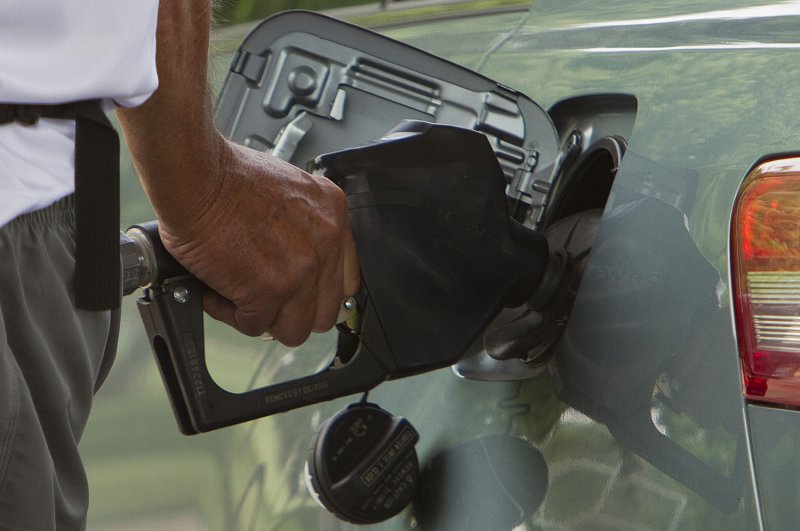U.S. retail gas prices have been on a slow, but steady, decline but remain exposed to heightened tensions on the global stage, market analysts said. File Photo by Gary C. Caskey/UPI |
License Photo
July 24 (UPI) -- Retail gasoline prices in the United States are showing signs of a steady decrease, but remain vulnerable to geopolitical tensions, analysts said.
Motor club AAA reported a national average retail price of $2.84 for a gallon of regular unleaded gasoline, unchanged from Monday and about 3 cents per gallon lower than last week. According to AAA's records, gas prices are at their lowest level since May.
"July gas prices have been on a roller coaster ride, but appear to be on a downward slope at the moment," AAA spokeswoman Jeanette Casselano said in a statement. "If demand and supply stay consistent, prices have the potential to stabilize barring any major events - geopolitical or natural disasters."
Climate forecasters at the National Ocean and Atmospheric Administration, a division of the Commerce Department, predict a 40 percent chance of an average 2018 hurricane season and a 35 percent chance of an above-normal season. Hurricanes Harvey and Nate last year pushed gas prices higher because of damage to refineries and export terminals in the U.S. south.
Meanwhile, U.S. sanctions pressure on Iran could isolate one of the top producers in the Organization of Petroleum Exporting Countries by November. During the weekend, U.S. President Donald Trump warned Iran against taking an aggressive posture.
"As such, one cannot rule out prospects for severe shortages should the bellicose language turn into action later this fall," Patrick DeHaan, the senior petroleum analysts for GasBuddy, said in a separate statement.
By region, the West Coast is the most expensive in the country, with California topping the list for the Lower 48 at $3.63 per gallon. Arizona's state average, however, dropped below the $3 per gallon mark. Regional gasoline inventories are 3.5 million barrels higher than this time last year, meaning retail prices should at least remain stable.
The Great Lakes, meanwhile, is the most volatile, with gas prices in Ohio declining 4.2 percent, or 13 cents, from last week. The region could see hikes in the price of gas as the regional inventories decline.
The federal government expects gas prices to average $2.76 per gallon this year. The national average price on this date last year was $2.39 per gallon.















